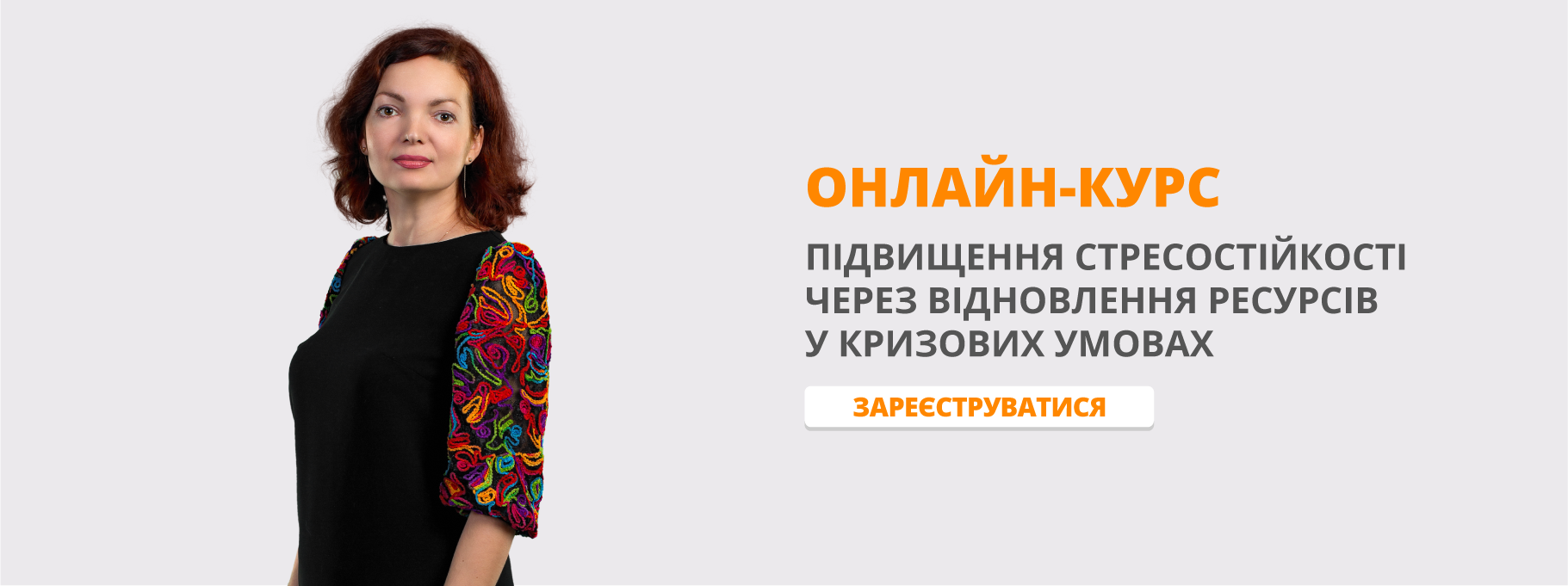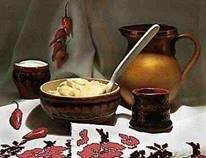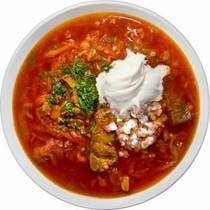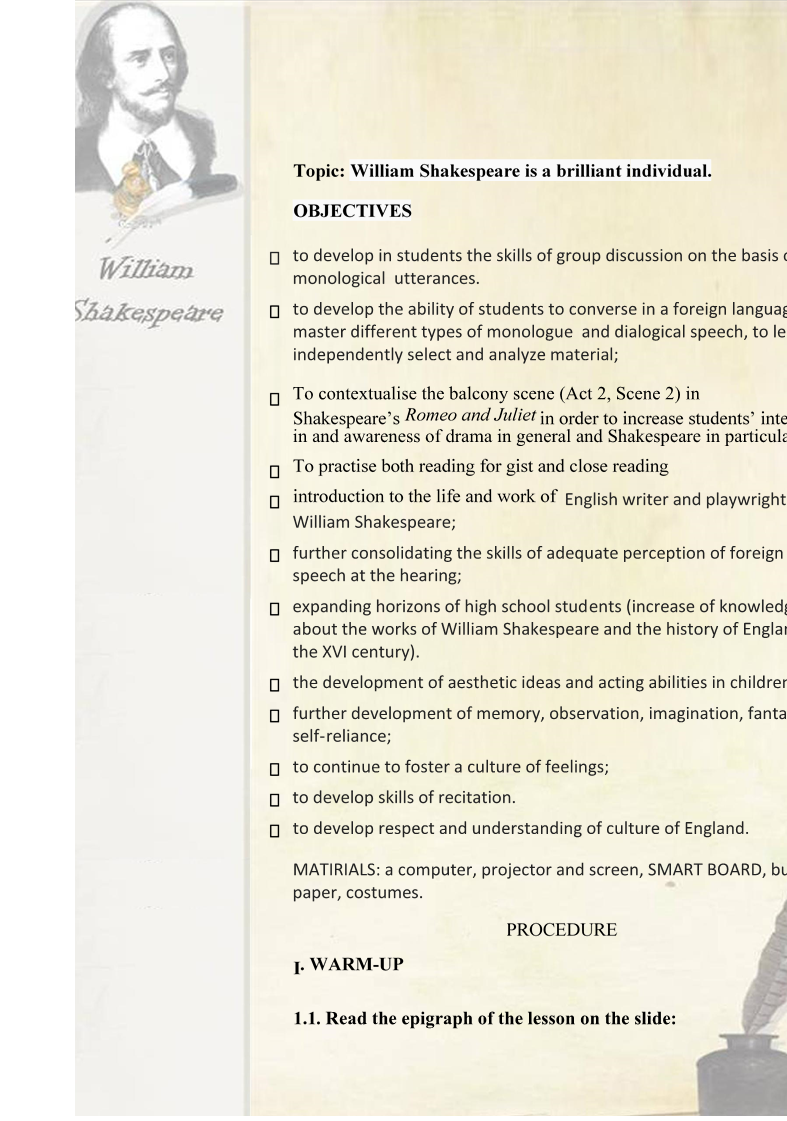Опис власного педагогічного досвіду
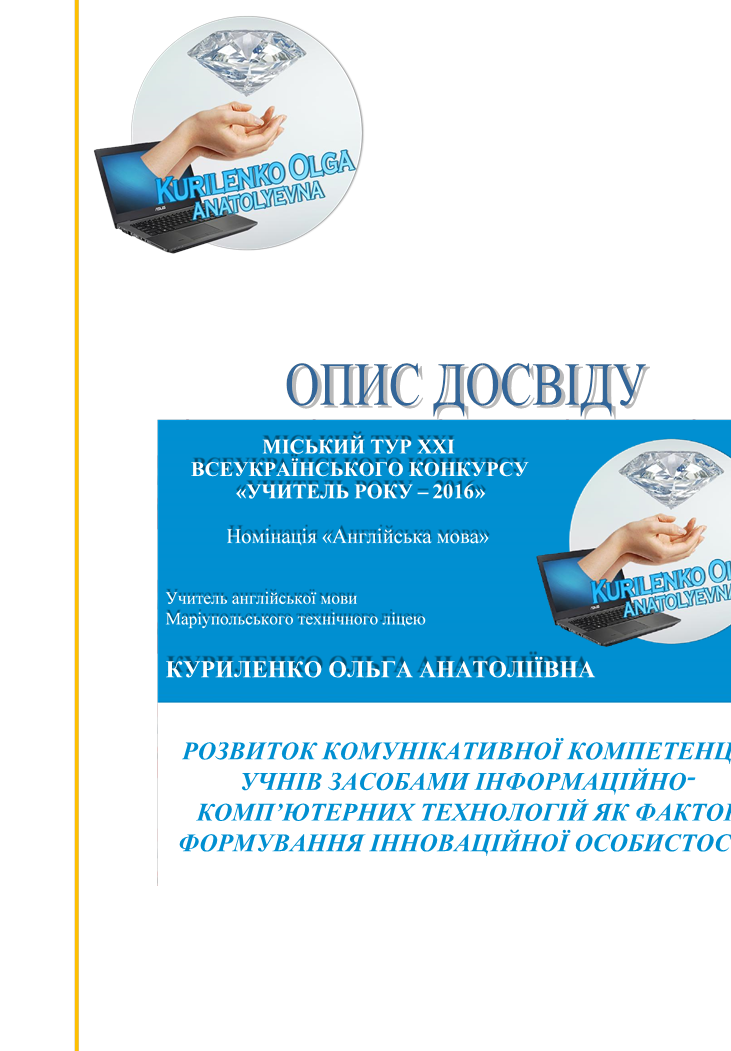
ОБҐРУНТУВАННЯ АКТУАЛЬНОСТІ ДОСВІДУ І ЙОГО ПРАКТИЧНОЇ
ЗНАЧУЩОСТІ
Одним із пріоритетних напрямків подальшого розвитку України є орієнтація на європейську інтеграцію. Важливу роль в цьому процесі відіграє адаптація вітчизняної моделі загальноосвітнього навчання до вимог європейської освітньої системи, яка ґрунтується «…на п’ятьох основоположних принципах створення єдиного освітнього простору: багатокультурна Європа, мобільна Європа, Європа професійної підготовки для всіх, Європа сучасних умінь і навичок, Європа, відкрита для світу» [11,с.75].
Час вимагає від нас переходу на інший, більш якісний рівень освіти. Суспільство має встигати за новими тенденціями в системі освіти.. У нас немає сьогодні більшої цінності, більшого ресурсу, ніж наші діти, навчання яких має бути спрямоване на формування в них якостей інноваційної особистості.У XXI столітті відбувається інформаційна революція, пов'язана з використанням комп'ютера і телекомунікаційних систем, і тому переважаючою в освіті стає модель: учитель ↔ засоби ІКТ + інформаційний простір ↔ учень. Відповідно, зовнішньою передумовою, свого роду базисом, який здатний забезпечити формування інноваційної особистості, є весь комплекс інформаційнокомп’ютерних технологій.
![]()
![]() Особливе значення у зв'язку з підготовкою інноваційної особистості, здатної до ефективної реалізації себе у сфері майбутньої професійної, соціальної, економічної, політичної діяльності, набуває проблема формування і розвитку комунікативної компетентності школярів у процесі вивчення англійської мови ( додаток 1).
Особливе значення у зв'язку з підготовкою інноваційної особистості, здатної до ефективної реалізації себе у сфері майбутньої професійної, соціальної, економічної, політичної діяльності, набуває проблема формування і розвитку комунікативної компетентності школярів у процесі вивчення англійської мови ( додаток 1).
ВИЗНАЧЕННЯ ПРОВІДНОЇ ПЕДАГОГІЧНОЇ ІДЕЇ ДОСВІДУ, МЕТИ, ЗАВДАНЬ
Основними дефініціями теми досвіду виступають поняття: інноваційна особистість, комунікативні компетенції, інформаційно-комп’ютерні технології. Завдання вчителя зрозуміти ці поняття та поєднати їх в своїй педагогічній практиці. Розглянемо послідовно дані дефініції та визначимо провідну ідею досвіду (додаток 2).
Зміни, що відбуваються в сучасному суспільстві, викликали зміни у філософії освіти. Ідеї самоцінності людської особистості, саморозвитку та самоосвіти призвели до виникнення нової картини світу, де людина постає як вища цінність соціального буття.
Вперше поняття інноваційної особистості, як необхідної передумови посилення економічного зростання, поширення підприємництва та накопичення капіталу, в 1962 році увів американський дослідник Еверетт Хаген.
За визначенням В.Н. Шевченка, «інноваційна особистість – один з типів сучасної елітарної особистості. Інноваційній особистості притаманні такі риси, як відкритість експериментам, інноваціям та змінам. Це виражається в готовності скористатися новим засобом, прийняти нову форму або вдатися до нового методу. Атрибутивною ознакою інноваційної особистості є творче мислення» [16].
Ю.А. Карпова вважає, що «інноваційна особистість – це особистість, яка творить сучасність, тобто, здатна вплинути на хід соціального розвитку» [10].
Серед провідних якостей особистості поряд з компетентністю, знанням справи настільки ж значущими стають ініціативність, готовність до інноваційних змін. А мобілізація цих якостей безпосередньо залежить від готовності і здатності вчитися.
Розуміння цього орієнтує школу на створення умов для формування інноваційної особистості учня, активної і творчої, здатної до подальшої самоосвіти, до співпраці та взаємодії, до критики і прийняттю рішення в процесі діалогу, до почуття особистої відповідальності.(додаток 3).
Основною метою навчання іноземним мовам є формування і розвиток комунікативної культури учнів, навчання практичному оволодінню іноземною мовою.
![]()
![]() Сучасні інтерпретації комунікативної компетенції в галузі викладання іноземних мов сходять до визначення американського вченого Д. Хаймз, згідно з яким, «комунікативна компетенція – це те, що потрібно знати тому, хто говорить для здійснення комунікації в культурозначущих обставинах» [14]. У «Державному стандарті базової і повної загальної середньої освіти» визначено, що «комунікативна компетентність — здатність особистості застосовувати у конкретному виді спілкування знання мови, способи взаємодії з людьми, що оточують її та перебувають на відстані, навички роботи у групі, володіння різними соціальними ролями» [4] (додаток 4).
Сучасні інтерпретації комунікативної компетенції в галузі викладання іноземних мов сходять до визначення американського вченого Д. Хаймз, згідно з яким, «комунікативна компетенція – це те, що потрібно знати тому, хто говорить для здійснення комунікації в культурозначущих обставинах» [14]. У «Державному стандарті базової і повної загальної середньої освіти» визначено, що «комунікативна компетентність — здатність особистості застосовувати у конкретному виді спілкування знання мови, способи взаємодії з людьми, що оточують її та перебувають на відстані, навички роботи у групі, володіння різними соціальними ролями» [4] (додаток 4).
Комунікативна компетентність, яка є невід’ємною складовою структури змісту освіти, передбачає оволодіння всіма видами мовленнєвої діяльності, основами культури усного і писемного мовлення, базовими вміннями і навичками використання мови в різних сферах і ситуаціях.
Оволодіти комунікативною компетенцією, не перебуваючи в країні, мову якої вивчаєш, справа дуже важка. Стратегія навчання іноземній мові може бути загальною, а тактика – різною. Закінчилася епоха єдиного стабільного підручника. Вчитель вибирає ту систему навчання, яка більше відповідає його смакам, методичній грамотності, а також умовам школи. Важливим завданням вчителя є створення реальних і уявних ситуацій спілкування, використовуючи для цього різні методи і прийоми роботи. В умовах «інформаційного вибуху» і розвитку нових інформаційних технологій (А.Г.Асмолов, А.А. Бодальов, А.А. Вербицький, Б.С. Гершунський, І.А. Зимова і ін.) актуалізується використання інформаційно-комп’ютерних технологій.
Інформаційні технології – це процеси накопичення, обробки, представлення і використання інформації за допомогою електронних засобів.
Інформаційно-комп’ютерна технологія – це педагогічна технологія, що використовує спеціальні програмні та технічні засоби для доступу до різних інформаційних джерел (електронних, друкованих, інструментальних, людських) і інструментів спільної діяльності, спрямованих на отримання конкретного результату.
Конкретизуючи способи використання ІКТ в процесі навчання, звернулася до класифікації С. А. Войтко, який вважає, що існує п'ять основних напрямків використання ІКТ на уроках іноземної мови (додаток 5).
Крім того, науковці виділяють і кілька основних прийомів використання ІКТ у процесі навчання іноземним мовам (додаток 6).
Таким чином, провідною педагогічною ідеєю досвіду є використання різноманітних методів, прийомів та засобів інформаційно – комп’ютерних технологій навчання для розвитку комунікативних компетенцій як основи формування та становлення складових інноваційної особистості (додаток 7).
Метою педагогічної діяльності за обраною проблемою є формування інноваційної особистості через створення інформаційно-комп’ютерного освітнього середовища, спрямованого на розвиток комунікативної компетенції учня (додаток 8).
Завдання педагогічної діяльності:
1. Впровадження системи форм, методів, прийомів роботи на уроці, які в майбутньому допоможуть сформувати місце особистості в суспільстві.
2. ![]()
![]() Організація навчальної продуктивної діяльності таким чином, щоб в учнів сформувалися потреби у здійсненні творчого перетворення навчального матеріалу з метою оволодіння новими знаннями, орієнтуючись у різноманітній інформації.
Організація навчальної продуктивної діяльності таким чином, щоб в учнів сформувалися потреби у здійсненні творчого перетворення навчального матеріалу з метою оволодіння новими знаннями, орієнтуючись у різноманітній інформації.
3. Підтримка учнів у їх бажанні знаходити власний спосіб діяльності, презентувати особистий продукт.
4. Стимулювання учнів до спілкування в різних ситуаціях, до висловлювання та відстоювання власної думки.
5. Розвиток вміння вести дискусію, оцінювати життєві явища без страху помилитися, дати неправильну відповідь.
6. Навчання навичкам користування сучасними інформаційними комунікаціями (Інтернетом, системою дистанційного навчання тощо).
ТЕХНОЛОГІЇ РЕАЛИЗАЦІЇ ПРОВІДНОЇ ПЕДАГОГІЧНОЇ ІДЕЇ ТА ЇЇ КОМПОНЕНТІВ
Україна народжується по-новому і виходить на велику арену міжнародного простору, де пріоритетними є комунікативні здібності англійської мови.
Завдання вчителя іноземної мови полягає у формуванні комунікативної компетенції учнів, тобто в розвитку їх здатності і готовності здійснювати іншомовне міжособистісне і міжкультурне спілкування з носіями мови. На уроках і в позаурочній діяльності створюю модель реального спілкування, яка сприяє виникненню в учнів природного бажання і необхідності взаємодії з іншими, це додає їм впевненості в собі і своїх силах для здійснення комунікації.
Ефективним педагогічним засобом вивчення іншомовної культури і формування комунікативних навичок, прискорення процесу навчання, зростання інтересу учнів до предмета, поліпшення якості засвоєння матеріалу, індивідуалізації процесу навчання є ІКТ навчання.
У навчальному процесі використовуються такі засоби ІКТ: електронні підручники та посібники; електронні енциклопедії та довідники; тренажери і програми тестування; освітні ресурси Інтернету; DVD і CD диски з картинами та ілюстраціями; мультимедійні презентації; науково-дослідницькі роботи і проекти та ін. Перераховані засоби ІКТ створюють сприятливі умови для організації індивідуальної. групової, парної, а також фронтальної роботи на різних етапах уроку. При організації уроку з використанням комп'ютерних програм інформація надається учням барвисто оформленою, з використанням ефектів анімації, у вигляді тексту, діаграми, графіка, малюнка. Все це дозволяє наочно і дохідливо пояснити, закріпити навчальний матеріал. А головне - дає можливість викладати матеріал ефективніше, вивільняючи час для мовної практики (додаток 9).
Свою діяльність навчання англійській мові із застосуванням ІКТ почала з підготовки дидактичного матеріалу до уроків, використовуючи програми MICROSOFT OFFICE WORD, а також користуючись «послугами» принтера і сканера. Спочатку це були тести, тексти із завданнями, граматичні таблички з поясненнями та прикладами, картки розмовної тематики і т. п. Все це дало можливість урізноманітнити види завдань і варіантів. Застосування комп'ютерних презентацій на уроках дозволило вводити новий лексичний, країнознавчий матеріал у найбільш захоплюючій формі (додаток 10).
![]()
![]() Найскладнішим у вивченні іноземної мови є розділ граматики, і добрим помічником на уроках є програма POWER POINT. Спочатку це були готові презентації, а зараз їх створюю самостійно, до цього спонукаю і учнів, інтенсивність навчання підвищується, а в учнів з’являється нові пізнавальні інтереси.
Найскладнішим у вивченні іноземної мови є розділ граматики, і добрим помічником на уроках є програма POWER POINT. Спочатку це були готові презентації, а зараз їх створюю самостійно, до цього спонукаю і учнів, інтенсивність навчання підвищується, а в учнів з’являється нові пізнавальні інтереси.
З появою відкритого доступу до мережі Інтернет, з'явилася можливість проведення Інтернет-уроків.
Поява в ліцеї інтерактивної дошки SMART BOARD дала можливість максимально урізноманітнити уроки (додаток 11). Працюючи з інтерактивною дошкою, учні можуть одночасно бачити, чути, вимовляти і писати, що сприяє кращому засвоєнню пропонованого матеріалу.
Відеоролики, пісні і сайти, що описують реалії англомовних країн, допомагають у знайомстві з іншомовною культурою.
Ігрові форми сприяють швидшому оволодінню фонетичними, лексичними, граматичними навичками на уроці.
У практиці роботи використовую мультимедійні навчальні посібники, які наочно представляють матеріал, забезпечують швидкий зворотній зв'язок (миттєвий контроль за засвоєнням матеріалу). Серед найбільш вдалих вважаю "London's course of English Language", "Talk to me", "English Platinum". Крім того, існує безліч сайтів, що допомагають успішно справлятися з різними завданнями. (Wikipedia. Org, Reward Internet, та ін.) Частіше використовую такі інтернет-ресурси: сайт http://interpals.net - для розвитку комунікативних навичок учнів, www.ello.org - матеріали для аудіювання, www.washingtontimes.org, www.nytimes.com, www.bbc.co.uk - ресурси масмедіа, http://viki.rdf.ru - матеріали, які розвивають комунікативні та творчі здібності учнів.
На персональному сайті www.Kurilenko-eng.at.ua працює посилання для перегляду англійського телеканалу BBC News.
Якщо є можливість, проводжу уроки в комп’ютерному класі, а також для розвитку комунікативної компетенції розробляю уроки різних типів, нестандартні уроки, а також інтегровані, наприклад, англійська мова + інформатика (додаток 12).
Методи ІКТ в практиці вчителя
Дистанційна взаємодія
Дистанційна взаємодія – це взаємодії вчителя і учнів, учнів між собою, учнів та однолітків із інших країн або міст за допомогою спеціальних освітніх веб-додатків: «Щоденник», «Хмара», електронна пошта, конференції на YouTube, чат, персональний сайт вчителя, за допомогою яких учні можуть вести обговорення вивчених тем, а також отримувати рекомендації і настанови викладача, обмінюватись думками та враженнями, обговорювати навчальні та особисті теми та питання. Дистанційна взаємодія може здійснюватися як в режимі реального часу, так і у відкладеному режимі. У своїй практиці використовую обидва варіанти.

 Скайп-конференції
Скайп-конференції
На уроці та в позаурочній діяльності створюю модель реального спілкування, яка сприяє виникненню в учнів природного бажання і необхідності взаємодії з іншими, що додає впевненості в собі і своїх силах для здійснення комунікації.
Скайп-конференції з учнями та представниками-носіями мов інших країн створюють автентичні умови для спілкування, сприяють зникненню мовного бар'єру.
«Websketch»
«Скетч» є ефективним прийомом навчання діалогічному мовленню. Скетч (англ. Sketch, буквально – ескіз, нарис, замальовка) - невелика п'єса комедійного або гострого змісту з двома, рідше – трьома персонажами – це підготовлена заздалегідь, написана учнями сцена за заданою проблемною ситуацією, можливо, із зазначенням персонажів, їх соціального статусу і рольової поведінки. «WebСкетч» – це сценка оформлена за допомогою Інтернет додатків: YouTube, Скайп, Хмара. Іноді «скетч» створюється на підставі запропонованого сценарію. Учні готують в парах або трійках запропоновану тему, а потім на уроці відбувається аналіз створеного сюжету.
Перший урок із застосуванням цієї методики провела в 10 класі з теми «Здоровий спосіб життя» у 2011 р. Проаналізувавши цей урок, прийшла до висновку, що в результаті такого уроку підвищується пізнавальна активність учнів, створюються добри умови практичного оволодіння мовою для кожного учня, таке спілкування дозволяє учням проявляти ініціативу, творчість, акторські здібності. Навіть найслабші учні починають працювати, виявляють інтерес до подій на уроці, тому практикую 2-3 таких уроки в семестр.
Web-портфоліо Портфоліо вважаю одним з активних методів навчання.
Інтерактивне веб-портфоліо, створене на сайті www.4portfolio.ru– це створення персонального Інтернет-простору для зберігання будь-якої інформації в цифровому форматі, а також подання в наочному і барвистому вигляді не тільки отриманих знань, умінь, навичок, а й навчальних, творчих і комунікативних здібностей.
Проект
Проектна діяльність допомагає інтегрувати іноземну мову в структуру власної компетентності учня, створює зв'язок між іноземною мовою та його власним світом.
Пропоную учням для оформлення власних творчих продуктів використовувати як додатки MICROSOFT OFFICE WORD (Power Point,
Publisher), так і Web програми Глогстер, Рrezi, Windows cinema, AutoCollage (додаток 13).
РЕЗУЛЬТАТИВНІСТЬ ПРЕДСТАВЛЕНОГО ДОСВІДУ
![]()
![]() Використання ІКТ забезпечує: ефективність (гарантія результатів, відповідних освітнім стандартам); гнучкість (можливість варіювання в змісті для забезпечення комфортності і свободи взаємодії педагога і учнів); динамічність (можливість розвитку або перетворення використовуваної технології); відтворюваність (можливе використання технології іншими вчителями в даному навчальному освітньому закладі)
Використання ІКТ забезпечує: ефективність (гарантія результатів, відповідних освітнім стандартам); гнучкість (можливість варіювання в змісті для забезпечення комфортності і свободи взаємодії педагога і учнів); динамічність (можливість розвитку або перетворення використовуваної технології); відтворюваність (можливе використання технології іншими вчителями в даному навчальному освітньому закладі)
Для мене показниками успішності застосування стратегії стали досягнуті особистісні та метапредметні результати, які, у свою чергу, зумовили предметні успіхи (додатки 14-17):
1) підвищення комунікативної активності учнів на уроках;
2) зростання числа учнів, що займаються англійською мовою в
позаурочний час, в тому числі і в мовних таборах, англо-мовних клубах;
3) зростання числа учнів, що беруть участь в різних олімпіадах і конкурсах з англійської мови, що свідчить про їх впевненості у своїх знаннях (особистісний результат), і відповідно, зростання числа призерів та переможців
(предметний результат); 4) підвищення якості навчання, успішної підготовки до ЗНО.
Імідж сучасного вчителя немислимий без знання ним інформаційнокомп'ютерних технологій. А коли вчителем набуваються необхідні знання та навички, комп'ютер стає незамінним інструментом в роботі, що значно полегшує її та підвищує ефективність та якість.
![]()
![]() Використання нових інформаційних технологій розширює межі освітнього процесу, підвищує його практичну спрямованість, а найголовніше сприяє розвитку інноваційної особистості учня , його комунікативної компетенції, а також умінню самостійно здобувати нові знання,що створює чудові умови для його успішної самореалізації в майбутньому.
Використання нових інформаційних технологій розширює межі освітнього процесу, підвищує його практичну спрямованість, а найголовніше сприяє розвитку інноваційної особистості учня , його комунікативної компетенції, а також умінню самостійно здобувати нові знання,що створює чудові умови для його успішної самореалізації в майбутньому.
Бібліографія
1. Бухлова Н.В. Формування навичок самоосвіти і самореалізації особистості // Педагогічна скарбниця Донеччини, 2002. – № 1.
2. Гин.А. Приемы педагогической техники. – [Електронний ресурс]. – Режим доступу: http://www.trizminsk.org/e/23109.htm#0105
3. Гуревич Р. С., Кадемія М. Ю. Інформаційно-телекомунікаційні технології в навчальному процесі та наукових дослідженнях : Навчальний посібник для студентів педагогічних ВНЗ і слухачів інститутів післядипломної педагогічної освіти. – Вінниця : ООО „Планер”, 2005. – 366 с.
4. Державний стандарт базової і повної загальносередньої освіти ЗАТВЕРДЖЕНО постановою Кабінету Міністрів України від 23 листопада 2011 р. № 1392.
5. Дистанційне навчання // Посібник. – [Електронний ресурс]. – Режим доступу: http://users.kpi.kharkov.ua/lre/bde/ukr0/.
6. Дробышева И.В. Информатизация образования – .-[Електронний ресурс].Режим доступу: 2007. - URL: // http://window.edu.ru/resource/003/56003 . 7. Інноваційні педагогічні технології : навч. посіб. / О. М. Коберник, О. В. Бялик. – Умань : КопіЦентр, 2009. – 217 с.
8. ![]()
![]() Інтерактивні технології навчання: Теорія, досвід: метод, посіб. Авт.-уклад.: О. Пометун, Л. Пироженко. – К.: А.П.Н., 2002. – 136 с.
Інтерактивні технології навчання: Теорія, досвід: метод, посіб. Авт.-уклад.: О. Пометун, Л. Пироженко. – К.: А.П.Н., 2002. – 136 с.
9. Кадемія М. Ю., Шахіна І. Ю. Інформаційно-комунікаційні технології в навчальному процесі : Навчальний посібник / Кадемія М. Ю., Шахіна І. Ю. / – Вінниця, ТОВ «Планер». – 2011. – 220 с.
10.Карпова Ю.А. Введение в социологию инноватики. – М., 2007
11.Навчання в дії: Як організувати підготовку вчителів до застосування інтеракт. технологій навчання: Метод, посіб. / А. Панченков, О. Пометун, Т. Ремех. – К.: АП.Н. - 72 с.
12.Сидоренко А.И., Чуба В.И. Ситуационная методика обучения: Украинский опыт — Киев: Центр инноваций и развития, 2001. — 192 с.
13.Сидоркина Н.В. Построение образовательного процесса на основе современных ИКТ. – [Електронний ресурс]. – Режим доступу:
URL: http://referat.znate.ru/text/index-46633.html
14.Современные теории и методики обучения иностранным языкам / под ред. Л. М. Фёдоровой, Т. И. Рязанцевой. – М. : «Экзамен», 2004. – 3230 c.
15.Ткачова Н.О. Ціннісні парадигми освіти. – Х.: Видав. гр. «Основа», 2004. – 128 с.
16.Шевченко В.Н. Инновационная личность как социальный тип //Личность.
Культура. Общество. – М., 2007.
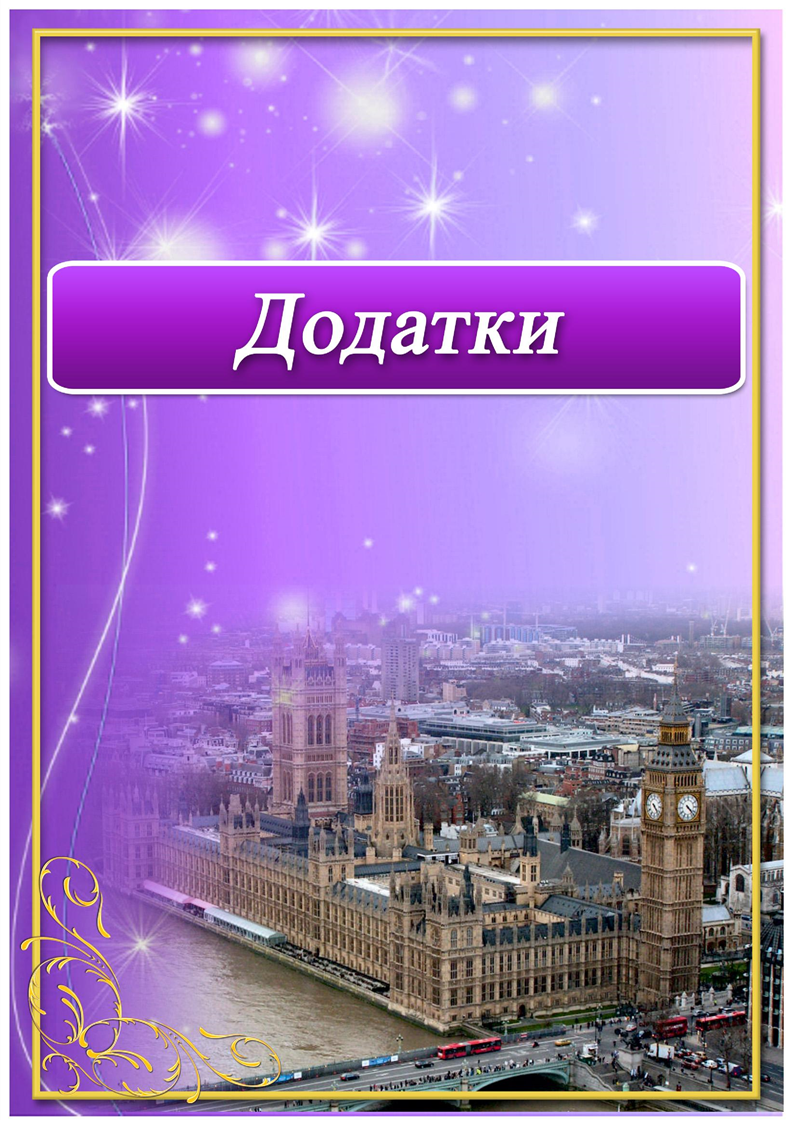
Додаток 1
![]()
![]()
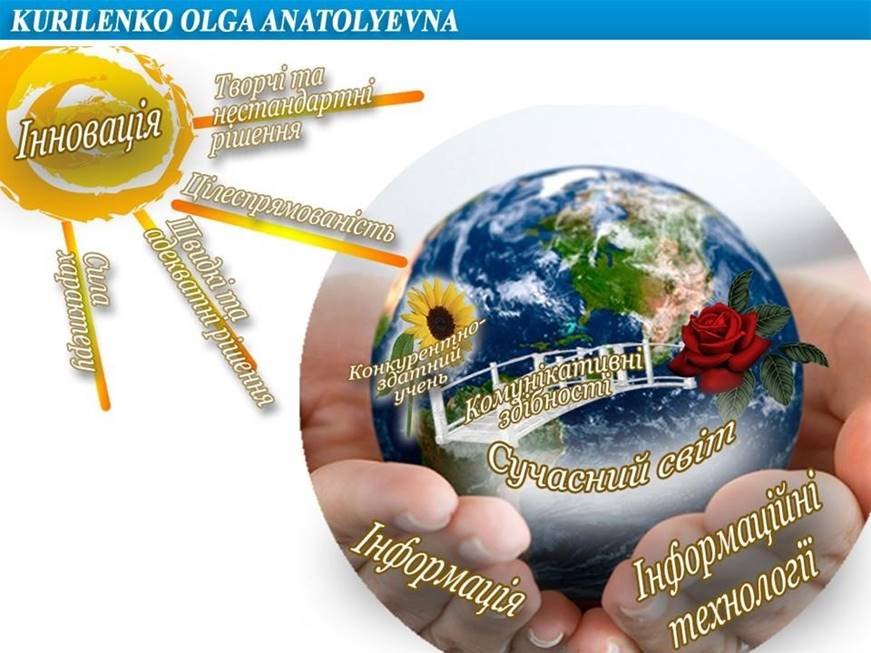
Додаток 2
![]()
![]()
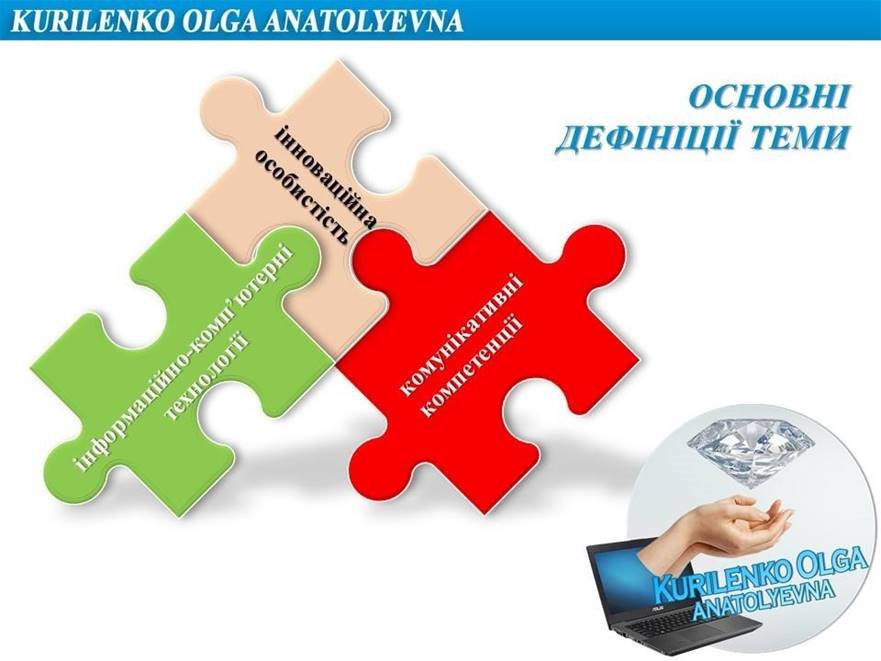
Додаток 3
![]()
![]()
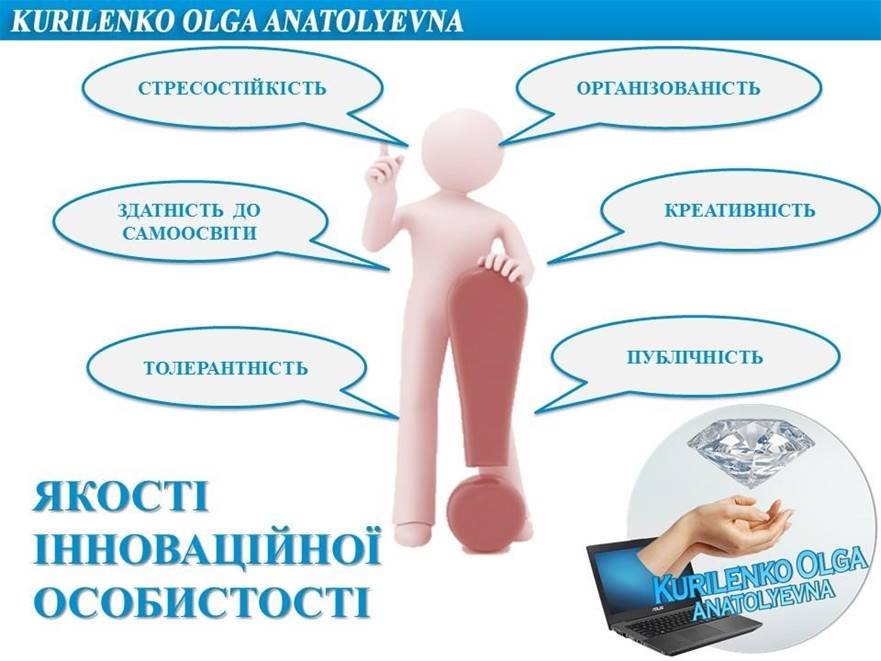
Додаток 4
![]()
![]()
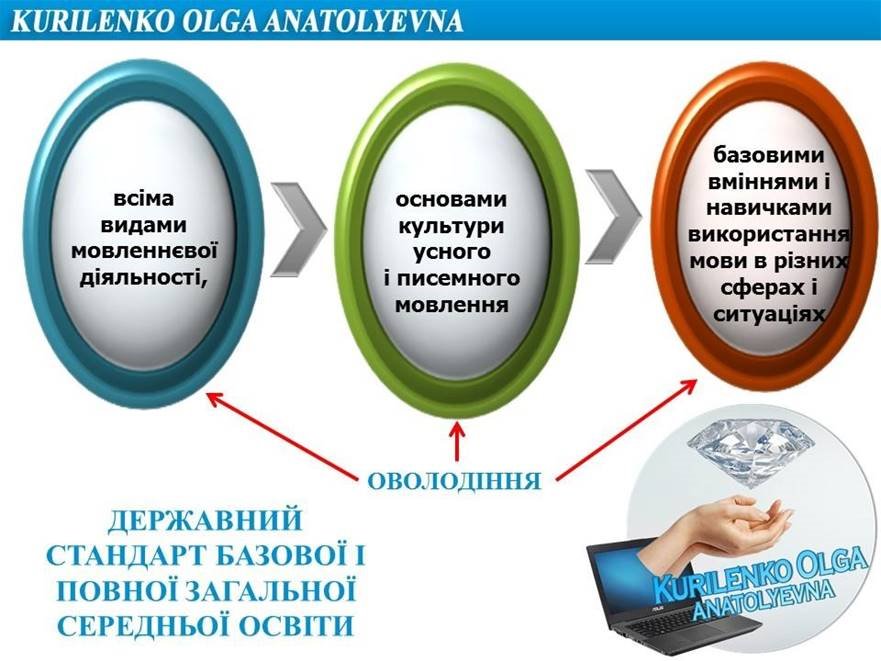
Додаток 5
![]()
![]()
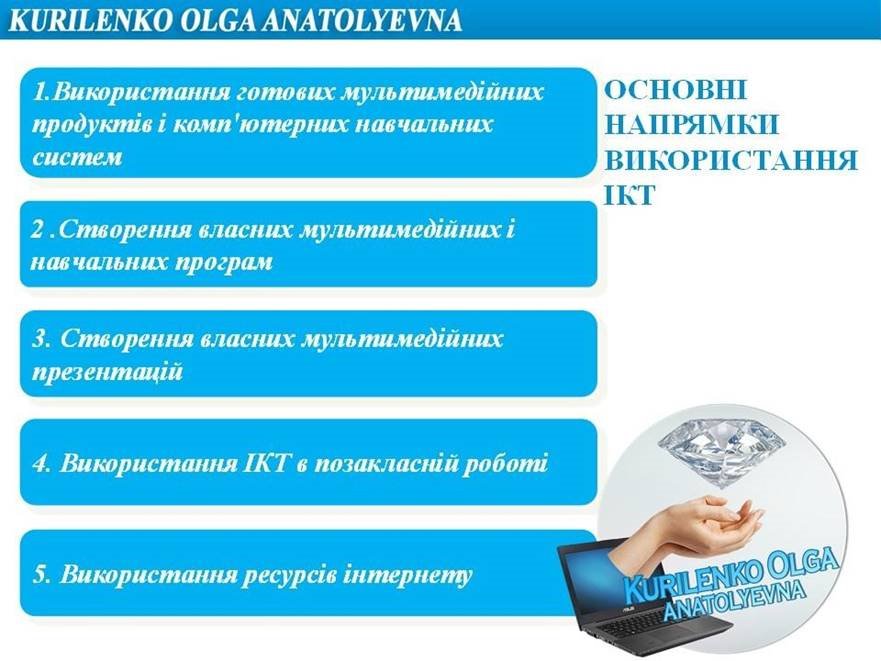
Додаток 6
![]()
![]()
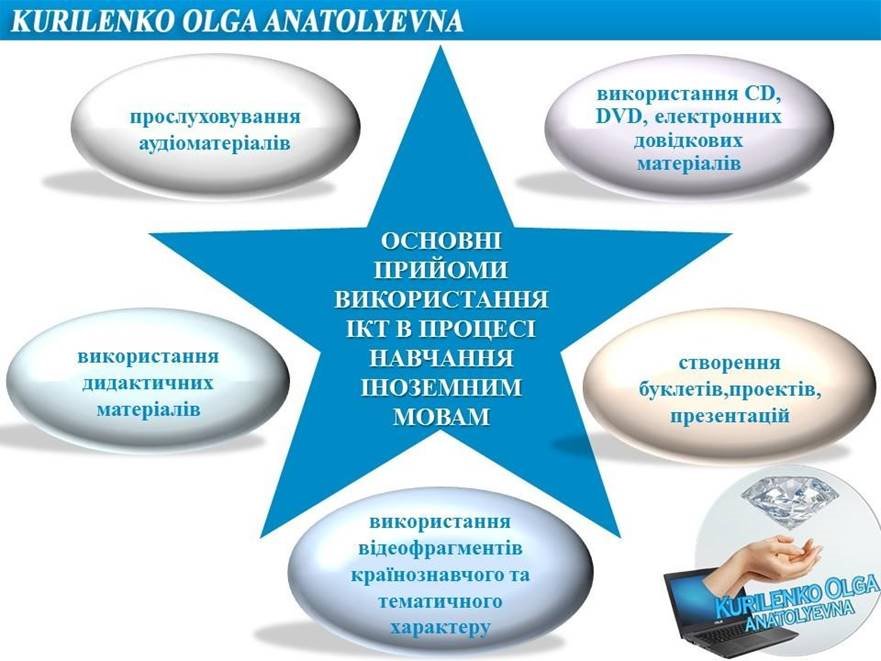
Додаток 7
![]()
![]()

|
Додаток 8 План работы над индивидуальной методической проблемой(2012-2016гг.)
|
|||||
|
№ |
Название этапа |
Содержание деятельности |
Сроки |
Форма представления результата |
|
|
1 |
|
• анализ затруднений • выявление противоречий • изучение литературы по проблеме • определение целей и задач • прогнозирование результатов • повышение собственной компьютерной грамотности • изучение опыта коллег |
2012-2013 учебный год
2013 г. |
Карта творческого роста, Обоснование выбора методической темы. Курсы компьютерной компетентности (сертификат) Результаты тестирования Курсы |
|
|
2 |
|
• составление программы работы • подготовка материальнотехнической базы • самообразование • методическое обеспечение • реализация собственной программы • отбор методик, технологий. • изучение возможностей Интернета • отслеживание промежуточных результатов • внедрение в практику технологий ИКТ |
2013-2014 учебный год |
Карта творческого роста, Картотека учителя Медиатека учителя Мониторинг качества Создание сайта Отчет на педсовете Планы - конспекты уроков с ИКТ |
|
|
3 |
|
• проведение контрольнодиагностических процедур • корректировка деятельности (программы) • соотнесение полученных результатов с планируемыми • оформление, описание результатов • практическое использование технологий в сочетании с ИКТ |
2014-2015 учебный год |
|
Карта творческого роста, Мониторинг качества Проект представления результатов Работа на персональном сайте Публикация материалов по проблеме Разработка интегрированных уроков с ИКТ |
|
4 |
|
• применение наработанных материалов в собственной педагогической деятельности • распространение данной технологии, методики при наличии запроса на неё • выбор формы подведения итогов • подведение итогов |
2015-2016 учебный год |
|
Карта творческого роста, База Портфолио, Сборник электронных дидактических и методических материалов, Выступление на МО Публикации Презентация итогов. |
|
|
|||||
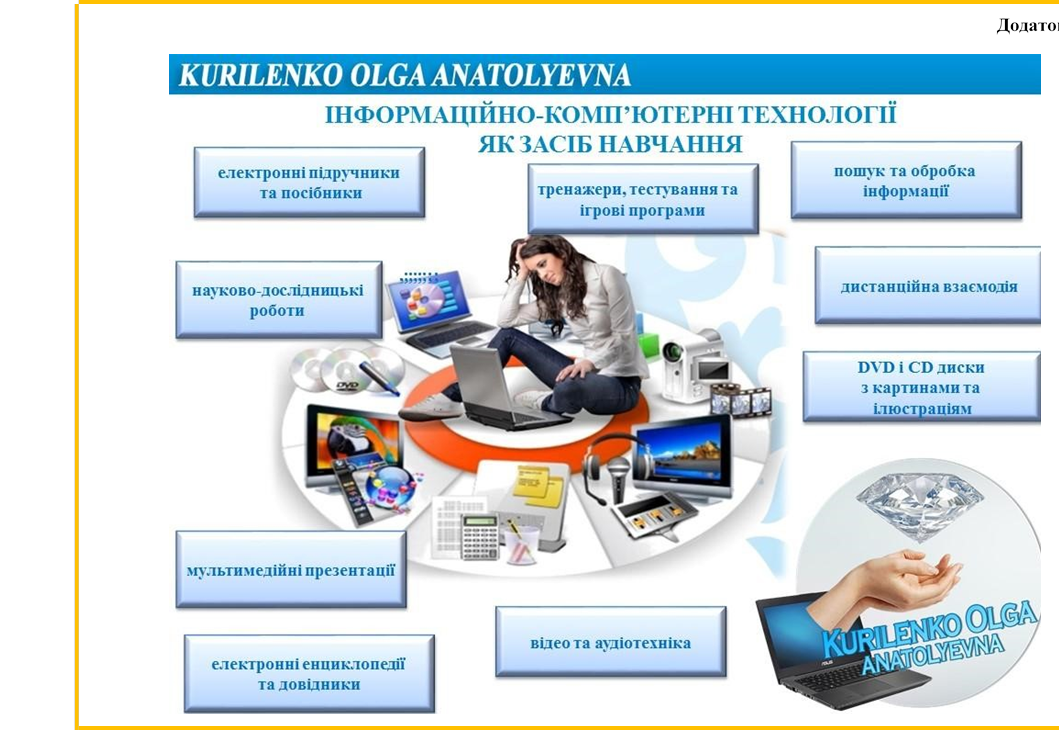
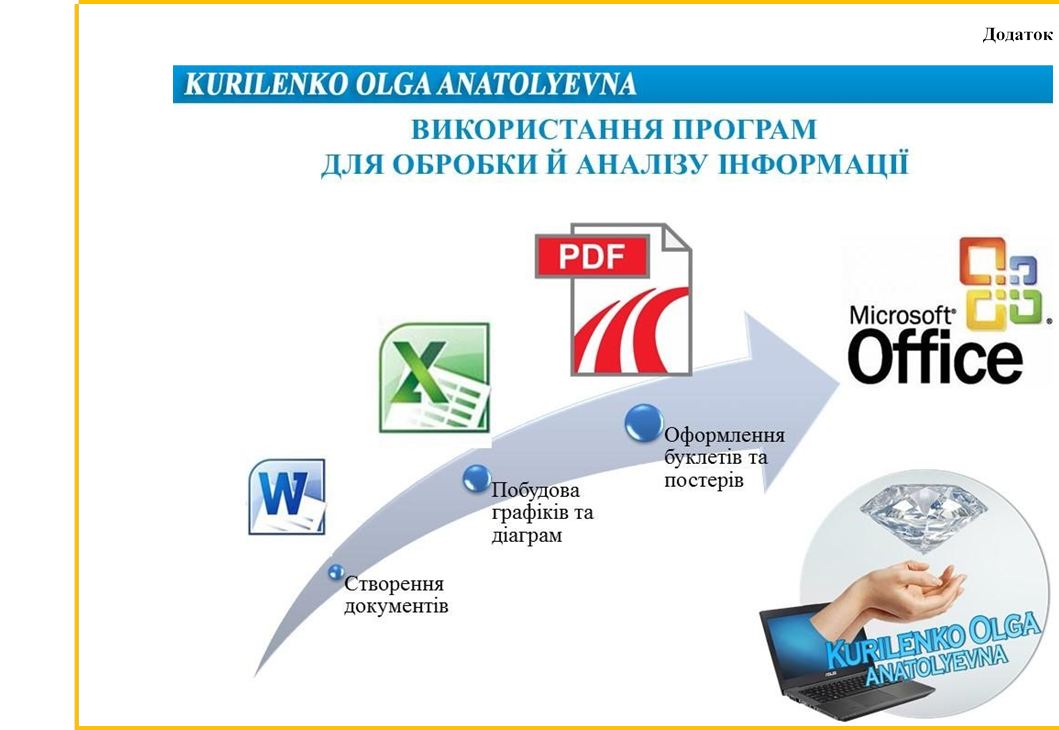
 |
|
CONTENTS
LESSON 1 «We are Ukrainians» LESSON 2 «Geographical position» LESSON 3 «Kyiv» |
|
|
|
LESSON 4 «Ukrainian national food and cuisine» |
|
LESSON 5 « The Lesson of generalization and systematization »
|
|
|
Пояснювальна записка Згідно з метою та завданнями Концепції національно-патріотичного виховання дітей та молоді розроблений цикл уроків з англійської мови з використанням інформаційних технологій у 8 класі до підручника О.Д.Карп`юк. У даному підручнику, рекомендованому для навчання англійської мови ,дуже мало уваги приділяється темам пов’язаних з Україною. Що на мою думку є не правильним, бо саме шкільна програма повинна включати в себе елементи виховання української свідомості. Матеріали циклу підготовлено відповідно до чинної навчальної Програми з іноземних мов. Зміст і формат уроків враховує головну мету навчання іноземної мови у загальноосвітніх навчальних закладах – формування в учнів іншомовної комунікативної компетентності на ґрунті комунікативних умінь, сформованих на основі мовних знань і навичок. На сучасному етапі розвитку України, коли існує пряма загроза денаціоналізації, втрати державної незалежності та потрапляння у сферу впливу іншої держави, виникає нагальна необхідність переосмислення зробленого і здійснення системних заходів, спрямованих на посилення патріотичного виховання дітей та молоді – формування нового українця, що діє на основі національних та європейських цінностей: - повага до національних символів (Герба, Прапора, Гімну України); - участь у громадсько-політичному житті країни; - повага до прав людини; - верховенство права; - толерантне ставлення до цінностей і переконань представників іншої культури, а також до регіональних та національно-мовних особливостей; - рівність всіх перед законом; - готовність захищати суверенітет і територіальну цілісність України. Ми бачимо, що найважливішим пріоритетом національно-патріотичного виховання є формування ціннісного ставлення особистості до українського народу, Батьківщини, держави, нації. У цьому циклі уроків поставлена мета не тільки надати учням знання з англійської мови і розвинути в них комунікативні здібності, а також виховувати в дітях ціннісне ставлення до українського народу, Батьківщини, держави, нації. Методична розробка адресована вчителям, які впроваджують в загальноосвітній процес форми навчання для розвитку иноваційнної особистості з використанням інформаційних технологій.
|
|
|
|
|
|
LESSON 1 |
|
THEME: We are Ukrainians AIM: Using IT to develop communicative competence. OBJECTIVES: - Introducing and practising new vocabulary - Revising Present Passive and Past Passive - Contrasting two grammatical points - Developing reading skills and listening skills ( for specific information) - Developing speaking (dialogue, monologue) - Developing writing (making up sentences) - Promoting interest in own native land Ukraine,its inhabitans and culture. - to form the spirit of patriotism to Ukraine and its traditions THE TYPE OF THE LESSON: The combined lesson. TEACHING RESOURCES AND EQUIPMENT: computer, Smart Board, CD player, Internet, Power Point, Skype, Media player, Informational resourse, web site http://lingualeo.com, CD-programme “London’s course of English Language”, Multimedia textbook, a textbook by Oksana Karpiuk (2008) for the 8th formers.
PROCEDURE: 1. Introduction 1) Greeting Teacher: Good morning, pupils! I am very glad to see you! Ps: We are glad to see you too! 2) Aim T: Today we are going to speak about Ukrainians.You will do a cluster on this topic. You will identify symbols of the Ukrainian nation. You will watch and listen to the tapescript. You will do many other activities. |
|
|
3) Warming up Look at the slide. Here you can see some extract from a Ukrainian folk song “Ukraine still lives”.(s.1) Tell me please, what is the main idea of these lines? Step №2 Discussion - Look at the pictures on the slide. (s.2)What nationality are these people? How do you know? - What do you know about Ukrainian people in terms of appearance, character,language and religion? - What makes it easy for you to identify nationality? 4) SMART BOARD. Now let`s make a cluster. Which adjectives on the slide in the box do you think go with the Ukrainian nationality? Ps using the tools are choosing the words and put them to the theme. 2.The Main part. On the slide let’s learn and practise new words on the topic:(s.3)( Choral and individual development) |
|
|
1) Pre-reading SMART BOARD. Identifying symbols of the Ukrainian nation Here are some sets of the words. Work in group to decide which word in each set is the odd one out. Explain why. Can you make up two more sets of four words like the above examples to try out in the other groups? Give the name to each group of the words. |
|
|
|
|
|
|
|
|
|
2) Reading Read the text and find the right word for: (s.4) Reading the text in http://lingualeo.com With the help of clicking students can easily translate the text. |
|
3) Comprehension check Complete these sentences on the slide with the words from the text http://lingualeo.com SMART BOARD 4) Relaxation period. Listening to the tape. T: Are you tired? I think you are. Close your eyes and listen to Ukrainian music (1 min) 5) Grammar activity CD “London’s course of English Language” Revising Present Passive and Past Passive Pupils are doing their tests at the computers. 6) Speaking and writing (copy books) - In groups of four write down everything you have learned about Ukrainian people and symbols. The first group to cope with the task should cry “we are ready”. - Tell the other groups what you have learned today. Do it in turns so that each member of the group should say at least a couple of sentences. - What can you add to the information given by the group-winner? 7) Listening and speaking Multimedia textbook - Listen to interview with Roger, a student from England. - Here are some answers Roger gave to interviewer. Working with your patner, try to work out what interviewer’s questions were. Pupils are working in pairs. - Now listen to the dialogue once more and check yourself. - Work in pairs. Practise the dialogue. |
|
|
8) Communication through the Skype. Pretend yourself to be an interviewer. So make some questions about Ukraine and its capital to interview a foreigner. His name is Brandon Hoffman. He is a photographer. Now he is living in Kiev. He is very famous. You may ask him about his profession, hobbies, family and his impressions of our country. Pupils are making their questions in copy books. Teacher is correcting them. Now Brandon is in Skype and Pupils are communicating with him. |
|
|
3. The ending part 1) Home work: |
|
|
- to learn new words by heart; - using ABBYY Lingvo 12 electronic dictionary, read and translate the words from ex.1a p.115, 116 in the textbook and do ex.1b p.115. - Grammar Reference in your text book “The Passive Voice” (p. 175) Extra task: - find useful and interesting information about Ukrainian people or symbols to make a presentation; - be ready to ask and answer the questions on this topic. 2) Summarizing: “Open Microphone” T →P1 → P2 →P3 |
|
|
|
|
|
|
|||
|
|
T: Now, imagine that I’ve got a real microphone. Well, your task is with the help of it to answer my questions. You have already known the rules of this activity. So, in chain , answer my questions: «What have you learnt at our English lesson today?» What did we speak about today? |
||
|
What new information about Ukrainians have you found out? Say one word characterizing your personality as a Ukrainian boy/girl. |
|||
|
|
3) Evaluating. |
||
|
Saying goodbye. T: Stand up, children! Thank you for your work. The lesson is over. Goodbye! LESSON 2 THEME: “Geographical position” AIM: Using IT to develop communicative socio-cultural competences. OBJECTIVES - Introducing and practising new vocabulary, fixing and activating it; - Controlling pupils’ skills and knowledge on the topic Present and Past Passive Voice; - Developing reading skills and listening skills ( for specific information); - Developing speaking (dialogue, monologue); - Developing writing (completing the table); - Promoting interest in own native land Ukraine, its geographical position; - Motivating students for futher learning English language. THE TYPE OF THE LESSON: The combined lesson. TEACHING RESOURCES AND EQUIPMENT: computer, Smart Board, Internet, Power Point, Skype, Media player, Informational resourse, Multimedia textbook, web sites: http://lingualeo.com, http://google.com/maps, http://master-test.com, a textbook by Oksana Karpiuk (2008) for the 8th formers.
PROCEDURE: |
|||
|
|
1. Introduction 1) Greeting T: Good morning, pupils! How are you getting on? Ps: We are very well, thank you. 2) Aim T: Today we will practise the vocabulary relating to the geographical position of Ukraine. We’ll read, do tasks, discuss. Besides, you will work with the map is on the site http://google.com/maps 3) Warming up - There is the quotation on the slide “Peaceful land, beloved country, O my dear Ukraine” (T. Shevchenko). T: Do you love your Motherland as Shevchenko did? Why? Ps are answering. T: To love is not enough, you should know everything about Ukraine. 2. The main part 1) Check on homework: - words p.115-116; - pupils’s presentations. |
||
|
|
|||
|
|
||||
|
|
2) Pre-reading - New words (on the slide), (choral and individual train) - The first thing that comes to our mind when we are speaking about any county is its geography. Now give your associations to this word. A cluster is on the blackboard. ← geography → ↓ ↓ ↓ ↓ (Location, boundary, area, water resources, cities, towns, etc.) T: Let’s devide in groups of four. Find the map of Ukraine and using the tool compass do the task. SMART BOARD. Match the sentences halves: Pupils are doing this task. 4) Home task: ex 1b p.115 Pupils are reading, translating and doing ex.2 p.116. Complete the sentences (orally) 5) Vocabulary practise. SMART BOARD. - Which word is odd? - Fill in the gaps with missing letters. Copy books. T: Make-up your own sentences with these words. 6) Relaxation period. Listening to the tape. |
|||
|
T: Are you tired? I think you are. Let’s listen to a beautiful song which is a soundtrack to the cartoon «The Spirit». You have already seen this cartoon and you know the main idea of it. So, listen to this song and think about something pleasant. (Pupils are listening to the song) T: By the way, do you like this song? I like it too. It`s my favourite one. 7) Site http://lingualeo.com Additional reading on the theme “The geographical position of Ukraine” (click the words to have their translations) 8) Writing T: Now complete the table in your copy books.
|
||||
|
|
Official name |
|
|
|
|
Area |
|
|||
|
Population |
|
|||
|
Capital city |
|
|||
|
The largest city |
|
|||
|
The highest mountain |
|
|||
|
The longest river |
|
|||
|
Main sources of income |
|
|||
|
- Find these things in the text (orally) a) two types of climate that Ukraine has b) three types of physical-geographical zones c) the names of two parts in which Ukraine is devided by the Dnieper 9) Grammar test. Site http://master-test.com Control pupils’ skills and knowledge on the topic Present and Past Passive Voice Pupils are doing their tests at the computers. |
||||
|
|
||||
|
|
|
|
|
10) Listening and speaking Multimedia textbook - Look at the pictures and listen to some people saying where they will go during their holidays. Try to guess where each of them is going, write the name of the place in the box. - Complete the sentences from the conversations. The task is on the slide. - Practise the conversation with your friends. Ps are working in pairs. - Make up a conversation about your future plans. |
|
3. The ending part 1) Home work: - to learn new words by heart; - do ex.3 p.116(role-play the situation in pairs) in the text book Extra task: T: Using the site http://interpals.com write an email letter, to your English-speaking penfriend about your future weekend. Send your screens to my email “cloud”. 2) Summarizing: “Open Microphone” T →P1 → P2 →P3 T: Now, imagine that I’ve got a real microphone. Well, your task is with the help of it to answer my questions. You have already known the rules of this activity. So, in chain , answer my questions: «What have you learnt at our English lesson today?» What did we speak about today? What new information have you found out? |
|
|
3) Evaluating. |
|
|
Saying goodbye. T: Stand up, children! Thank you for your work. The lesson is over. Goodbye!
LESSON 3 THEME: Kyiv AIM: Using IT to develop communicative and socio-cultural competences. OBJECTIVES: - Introducing and practising new vocabulary, fixing and activating it - Revising pupils’ skills and knowledge on the topic Present Perfect and Past Simple - Developing reading skills and listening skills ( for specific information) -Using video to build awareness of verbal communication. - Developing speaking (dialogue, monologue) - Developing writing (completing the table) |
|
|
- Promoting interest in the capital of Ukraine, instiling respect for our homeland and its traditions and landmarks. - Motivating students for futher learning English language. THE TYPE OF THE LESSON: The combined lesson. TEACHING RESOURCES AND EQUIPMENT: computer, Smart Board, CD player, Internet, Power Point, Skype, Media player, Informational resourse, CD programme “London’s course of English Language”, web sites: http://lingualeo.com, http://google.com/maps, http://master-test.com, http://interpals.com, YouTube, a textbook by Oksana Karpiuk (2008) for the 8th formers, ABBYY Lingvo 12 electronic dictionary.
PROCEDURE: 1. Introduction 1) Greeting Teacher: Good morning, pupils! I am very glad to see you! Ps: We are glad to see you too! |
|
|
|
|
|
|
|
|
|
2) Aim T: Today we are going to speak about the capital of Ukraine – Kyiv.You will do a cluster on this topic. You will have a nice virtual trip around Kyiv. You will watch video on YouTube, do grammar tasks, give your opinions and work with map of Kyiv on the site http://google.com/maps 3) Warming up.(presentation slide with pictures of Kyiv) Answering the questions: - Do you know anything about Kyiv? - Do you know the names of any places there? - Do you know anything about the places? T: What places have you visited? Ps are answering. |
|
2. The Main part. At the next slide let’s learn and practise new words on the topic (Choral and individual development) 1) Check on homework: - words; - ex.3 p.116(role-play the situation in pairs) in the text book. 2) Pre-reading - Showing slides with picures of Kyiv’s landmarks with the names of them. - Ps are repeating their proper names 3) Reading: Reading the text “Kyiv – the capital of Ukraine” in http://lingualeo.com With the help of clicking students can easily translate the text. 4) Reading comprehention check - http://master-test.com True/False |
|
|
5) Vocabulary work SMART BOARD. - matching; - find the definition; - complete the sentences whith the words. 6) Grammar activity CD “London’s course of English Language” Doing tasks “Comparing Present Perfect and Past Simple” Pupils are doing their tasks at the computers. 7) Gymnastics for pupils` eyes. 8) Listening and speaking You are welcome to Kyiv sightseeing tour. Let’s watch video on YouTube about our capital. Find out: - the date of Kyiv formation; - outstanding landmarks; - the name of the main street and its length; - three events that ifluenced thelife of Kyiv’s inhabitants. Be ready to discuss this film and answer the questions in the form of test. 9) Post-listening. Answering the teacher’s questions. Doing test on http://master-test.com 10) Speaking |
|
|
|
|
|
|
||
|
|
Working in pairs. Role-play T: I’ll give you a sheet of paper with a sightseeing tour around Kyiv. It will help you to make an excursion. Pretend yourself to be a guide. Then change your roles. 11) Writting To write a small essay about your trip around Kyiv. Ps are using ABBYY Lingvo 12, electronic dictionary. 3. The ending part 1) Home work: - to learn new words by heart; - In groups of four,report with presentation on the topic “Kyiv – the capital of Ukraine” or make a brochure on this topic in the Microsoft Office Publisher - how to make brochure you should watch my online-conference on YouTube. 2) Summarizing: “Open microphone” T →P1 → P2 →P3 T: Now, imagine that I’ve got a real microphone. Well, your task is with the help of it to answer my questions. You have already known the rules of this activity. So, in chain , answer my questions: «What have you learnt at our English lesson today?» What did we speak about today? What new information have you found out? Did you like video tour around Kyiv? 3) Evaluating. |
|
|
Saying goodbye. T: Stand up, children! Thank you for your work. The lesson is over. Goodbye! |
||
|
LESSON 4 SUBJECT OF THE LESSON: Ukrainian national food and cuisine |
||
|
AIM: Using IT to develop communicative and socio-cultural competences. |
||
|
OBJECTIVES: |
||
|
|
• to practice writing; • to extend pupils’ knowledge about Ukrainian national food and cuisine; • to teach pupils to work in groups; • to broaden their outlook; • to facilitate free speaking by elicitating personal experience and knowledge; • to develop communicative skills both in monologue, dialogues and pairs; • to polish reading skills, speaking skills; • to practice in expressing and exchanging opinions on the subject; • to revise the lexical material on the topic and automate its usage; • To cultivate the right attitude toward food, as well as interest to the eating habits of Ukrainians. |
|
|
THE TYPE OF THE LESSON:The combined lesson. EQUIPMENT: computer, Smart Board, CD player, Internet, Power Point, Skype, Media player, Informational resource, CD “London’s course of English Language”, web site: http://lingualeo.com
THE PLAN OF THE LESSON I. Introduction. T: Good morning, everyone. I am very glad to see all of you here! 1. Aim. |
||
|
|
||
|
|
|||
|
|
Today I`d like to speak about Ukrainian Cuisine. At this lesson we`ll learn more about food traditions of Ukrainians. But first let`s check on your homework. |
||
|
|
Warming up. (presentation slide with pictures of Kyiv) |
||
|
T.: What places can we see in Kyiv? Which of them are the most popular tourist places? Are there any tall buildings in Kyiv? |
|||
|
|
1. Check on homework: 2. T:Smart Board. |
||
|
Tasks on revising the words from the previous theme. Tasks: -Matching the pictures with the corresponding captions - Fill in the gaps Your home task was to prepare, in groups of four , a report about “Kyiv – the capital of Ukraine” or make a brochure on this topic in Microsoft Office Publisher. Let`s listen to the presentations. Now look at the screen, please. After your presentations be ready to answer another groups`questions. 2. The Main part. 1) Presenting Vocabulary. I want to present 10 best traditional Ukrainian dishes (Presentation.Slides with pictures and their names). Let`s repeat the names of these dishes all together Repeat the following proper names after me 1. Ukrainian borsch 2. Zaporiggyan cabbage soup 3. Holodets 4. Salo with garlic 5. Deruny 6. Home sausage 7. Nalysnyky with cottage cheese 8. Vareniki with cabbage and mushrooms 9. Apple pie 10. Kulish 2) Pupils are at the computers and doing their vocabulary training tasks in http://lingualeo.com 3) GAME «Chain». T: And now let`s play the game “Chain of letters”. How many words can you find in this chain of letters? Well, there are 12 words. Find them, please. But first open your copy-books, write down the date, the topic of our lesson and these words. (borschholubsiderunysalokholodetsryazhanka) (kompotkvaskaravaikutiasyrnikirassolnik) 4) Reading Pre-Reading Activities. T.: What is your favourite dish? — My favourite dish is varenyky with cherries. T: Don`t you know, pupils, what our mood depends on? P: It depends on weather P: It depends on our parents P: It depends on our school marks P: It depends on our meals T: Of course, you are right. I agree with all your statements. Our mood also depends on our meals. Our Ukrainian people like tasty food and women in our country can cook tasty things. While-Reading |
|||
|
|
|||
|
|
||
|
|
Pupils are reading and translating the texts using ABBYY Lingvo 12 when they need it. FOOD IN UKRAINE
|
|
|
|
Ukrainian national food got a merited renown almost in all places of the world. Different floury dishes (pampushki, galushki, vareniki, korzhi and others), meat dishes (Ukrainian sausages, cold collations, game, birds etc.), vegetable and milk dishes (ryazhenka and sirniki), various drinks of fruit and honey are very popular in Ukraine. Traditional Ukrainian meal |
|
|
|
||
|
But especially known and most favorite dish all over the world is famous Ukrainian borsch. Borsch is cooked of fresh vegetables: cabbage, beet, tomato with the addition of pounded lard with garlic and parsley. The combination of all these groceries give the borsch its piquancy, aroma and unforgettable taste. There are about 30 types of Ukrainian borsch (Poltava borsch, Chernigov borsch, Kiev borsch, Volyn borsch, Lviv borsch and others). Ukrainian borsch |
||
|
|
||
|
Various porridges - vareniki filled with cottage cheese, potatoes, stewed cabbage and berries in summer - are prevalent in Ukraine too. Stewed meat with potatoes, Ukrainian bitki with garlic and lard, stewed cold boiled pork with cabbage and lard, krucheniki and others have the same popularity among Ukrainian lovers of tasty food. |
||
|
Ukrainian vareniki |
||
|
Fish dishes have a considerable part in Ukrainian national food assortment from the old times. For example, crucian (carp) baked in sour cream, fish krucheniki, carp stuffed with mushrooms and boiled buckwheat, carp stewed with onion or sour cream, pike perch stuffed with mushrooms and crawfish, and others. |
||
|
Ukrainian krucheniki |
||
|
|
||
|
|
Ukraine national cookery is rich in meals cooked in special cases (wedding, birth of the child, send-off to the army and others). In such a way pancakes of wheat and buckwheat flour and vareniki are the obligatory meals in Pancake week (Maslenica). Meat or liver pies are usually cooked for the most solemn occasions. The ceremonial dish was fruit compote - uzvar. Now these dishes are common in every Ukrainian and Russian canteen or restaurant. Ukrainian uzvar |
|
|
|
||
|
|
Post-reading Site http://master-test.com Pupils are doing drills at the computers. Teacher is checking up. T: Find out English equivalents in the text. 5) Relaxation. Listening to the song «But my dear varenichki wants» T: What is this song about? |
|
|
6) Grammar rules review on “Making - up questions”. CD-programme “London’s course of English Language” 7) Writing. Teacher: You are divided into three groups. Pretend yourself to be interviewers.Ask Brandon Hoffman about Ukrainian dishes. Pupils are making their questions in copy books. Teacher is correcting them. 8) Listening and speaking time. Work in groups. Communication through the Skype. Now Brandon is in Skype and pupils are asking him. 3. Concluding Part. 1) Summarizing: “Open microphone” T →P1 → P2 →P3 T: Now, imagine that I’ve got a real microphone. Well, your task is with the help of it to answer my questions. You have already known the rules of this activity. So, in chain , answer my questions: «What have you learnt at our English lesson today?» What did we speak about today? What new information have you found out? 2) Home task Divide into groups. For the next lesson choose the dish and make a project by using home video cameras, shoot your video making comments how you cook a Ukrainian national dish. You will show the video and be prepared to answer the questions on your topic. Plenty of useful info you can find on the site http://ukrainetrek.com/about-ukraine-cuisine.Send your questions, content to my electronic mail ,cloud,I'll be in touch in chat. 3) Evaluating. Saying goodbye. T: Stand up, children! Thank you for your work. The lesson is over. Goodbye!
LESSON 5 Lesson of generalization and systematization. AIM: Using IT to develop communicative and socio-cultural competences. SUBJECT OF THE LESSON: Do you know Ukraine? |
||
|
OBJECTIVES: |
||
|
|
||
|
|
|||
|
|
- To generalize lexical and grammatical material on a subject: "Ukraine" and "Passive voice, Present Perfect and Past Simple" to form communications. - To polish reading skills, speaking skills; - To revise the lexical material on the topic and automate its usage; - To form communicative competences of the dialogical and monological speech.. - To cultivate interest and respect to own culture - To systematize material about Ukraine; - to promote development of creative activity in students; - to form the spirit of patriotism to Ukraine and its traditions to broaden their outlook; THE TYPE OF THE LESSON: Lesson of generalization and systematization on the topic "Welcome to Ukraine".
|
||
|
|
THE PLAN OF THE LESSON 1. Introduction. |
||
|
|
T: Good morning, everyone. I am very glad to see all of you here! |
||
|
1. Aim. |
|||
|
2 1) 2) Pre 1. 2. 3 4 3) |
The aim of our lesson is to revise the theme about Ukraine. |
||
|
Warming -up Look at the slide. (Slide #1, 2) http://google.com/maps Will you describe it? Children describe the picture of maps “Ukraine” and “Kyiv” What do you think about the aim of our lesson today? Express your opinions. . The Main part. Check on homework: Present your video to your classmates. Please be extremely attentive. Answer questions after viewing your video. Reading -reading activity Teacher: Are you able to take part in the following quiz? Smart Board Quiz “HOW WELL DO YOU KNOW YOUR COUNTRY?” How many countries in the European Union are bigger (km2 ) than Ukraine? a none; b one; c two In which language is the name of the country ‘Úcráin’? a Hungarian; b Finnish; c Irish . The Ukrainian flag has two colours on it, blue and yellow. Which country does not have only two colours on its flag? a Poland; b Brazil; c Sweden . One of the most popular dishes in Ukraine is varenyky. Which country has a very similar dish to this? a Germany; b Greece; c Poland While-reading Read the text quickly to check your answers to the quiz. |
|||
|
Ukraine is a land of contrasts, from north to south and east to west, in geography, language and culture. It is the largest country in Europe, not counting Russia, but has a |
|||
|
|
|||
|
|
|
|
|
population of only around 45 million people, a little less than Spain, meaning that it is easy to find quiet and natural places where you can unwind. In Ukraine there is something for everyone: mountains in the south and west, the beautiful Black Sea, unspoilt forests and open country and, of course, the rich soils of Ukraine. The flag of Ukraine, like its neighbours Poland and Sweden, has two colours – in Ukraine’s case, blue and yellow – and it can be seen flying proudly from official buildings throughout the country. The famous capital of Ukraine, Kyiv, is a large city where almost 3 million people live. It is one of the oldest cities in this part of Europe and is a magnificent mixture of the old and the new, with a wide variety of attractions, including countless beautiful historic buildings and monuments and a modern metro system to help you visit it all. When you visit Ukraine, you should not only visit Kyiv, of course. Be sure to visit Kharkiv in the east and beautiful Odesa in the south by the sea, and historic Lviv in the west – at the very least! If you come to Ukraine, better make it a long visit! The name of Ukraine is easy for foreigners because it the same in almost all languages – in English ‘Ukraine’, in Polish ‘Ukraina’, in Irish ‘Úcráin’ but saying anything else in the Ukrainian language can be difficult, especially if you do not know the Cyrillic alphabet. There is no need to worry, though, as Ukrainians are very patient with foreigners trying to speak their language. There are other language spoken in Ukraine, especially Russian and, in the west, Polish, and today more and more Ukrainians are learning English, French and German. Ukrainian food is tasty and filling – you certainly won’t be hungry after a real Ukrainian meal! Make sure you try traditional dishes like borsch (beetroot soup), varenyky (filled dumplings, very similar to Polish pierogi) and holubtsy (stuffed cabbage rolls), not forgetting, of course, the world-famous Chicken Kiev which, though not a traditional Ukrainian dish, originated in Ukraine and became famous in the West. |
|
The true treasure of Ukraine, however, is not its mountains or its waterfalls, not its architecture or its food; the true treasure of Ukraine is its people. In the cities people’s lifestyles can be very hectic and the people quite stressed – in fact, sometimes visitors to Ukraine say that Ukrainians do not smile too much… until you get to know them. Then the famous hospitality of the Ukrainians comes to life. If you are invited to visit a Ukrainian in their flat or house, be ready for a long and lively visit! 4) Read the text again and match the headings to the paragraphs. There is one extra heading. a So much to see! b Home is where the heart is c Popular with everybody d Bon appetit! e Far from the crowds f Quite a challenge! 5) Grammar and lexical test Site http://master-test.com 6) Listening http://lingualeo.com listening test http://master-test.com 7) Speaking Imagine that one of you will be a guide around Ukraine and your partner is a foreigner. Act out the situation in pairs. 8)Writing activity (free writing technique) Summary “My motherland “ «ABBYY Lingvo 12» can help you. Listen to the music and write about your Motherland. All your ideas are valuable and it doesn’t matter if you write about the geographical position or about love to your |
|
|
motherland.Don’t stop writing till the music plays. If you don’t know what to write just write like “I don’t know..I forgot the word…or repeat the previous sentence… Start like “Ukraine is my motherland… |
|||
|
|
3. Summing up 1) Analysis of achievement of the purpose. I would like to ask you if you are proud of our country. We should always remember to be a real citizen of Ukraine. Each of us should mind our own origin, nation, traditions and language. Thank you for a well-done work. All your answers were great and highly appreciated by me. 2) Home task “My Culture Project “ |
||
|
|
- Work in a small group. Plan an advertising campaign to encourage people to come and visit Ukraine. Think about the following questions. - What photographs (buildings, places, and people) could you use for advertisements and billboards? - What music (you may choose more than one singer, song or style) would best represent your country? - Which celebrities would you choose to be the public face of your country? - What slogan can you think of for the campaign? - Send your questions, content on my electronic mail , cloud, I'll be in touch in chat. |
||
|
|
4) Evaluating. |
||
|
Saying goodbye. T: Stand up, children! Thank you for your work. The lesson is over. Goodbye!
|
|||
|
|
|||
 A LIST OF SOURCES
A LIST OF SOURCES
1. Єникова О.М. Предметний тиждень. Анлійська мова: Методичний посібник для вчителів. − Х.: «Скорпіон» , 2004.
2. Карп’юк О. Д. Англійська мова: Підручник для 8-го класу загальноосвітніх навчальних закладів. − Тернопіль: Видавництво «Астон», 2008.
3. Куварзіна М.В. Ангійська мова: Нестандартні уроки. 5-11 класи. − Х.: «Ранок», 2009.
4. Кубарьков Г.Л., Тимощук В.А. 1000. Сборник новых тем современного английского языка. − Донецк.: ООО ПКФ «БАО», 2005.
5. Jane Hudson, Tim Falla, Paul A Davies Solutions , Pre-intermediate Ukraine Oxford University Press 2nd edition, 2012.
6. Raymond Murphy. A self-study reference and practice book for elementary students of English. Cambridge University Press, 1996.
7. Topical Dictionary. Forms 7-8 / Сост. В.И. Томаева. − Х.: Країна мрій , 2006.
8. Topical Dictionary/Упоряд. В. І. Томєва. − Х.: ТОВ «Нова тема» , 2009.
![]() Internet resources
Internet resources
1. Encyclopedia of Ukraine web site.
3. Borderland: A Journey through the History of Ukraine
4. Language and Travel Guide to Ukraine
9. «ABBYY Lingvo 12».
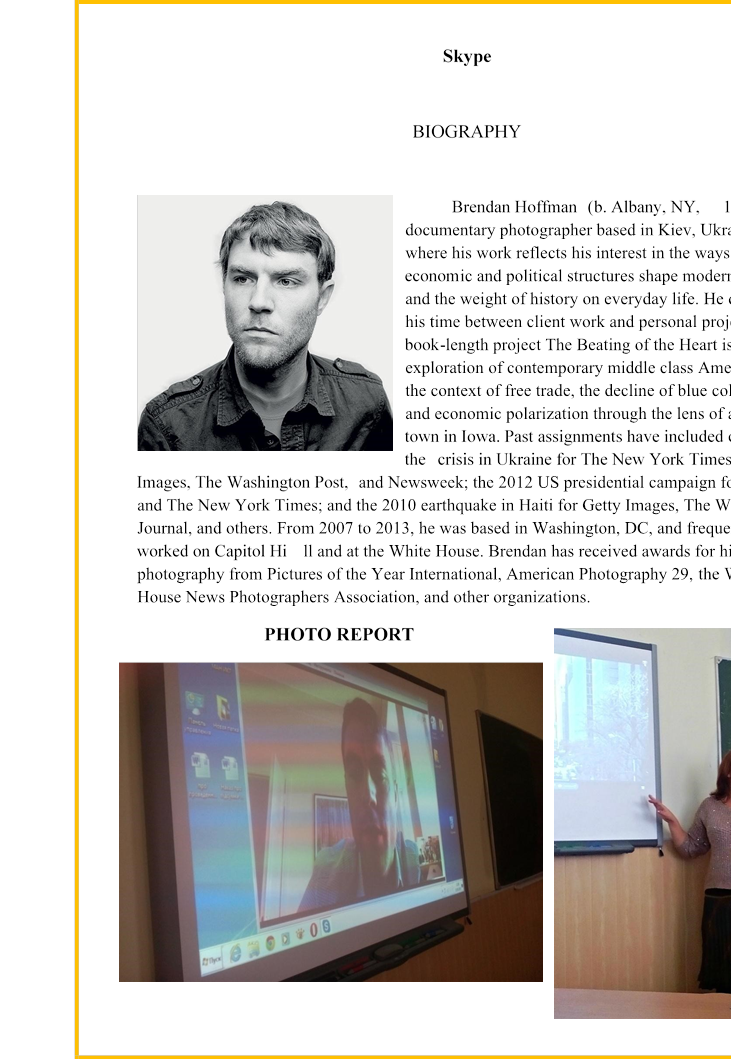
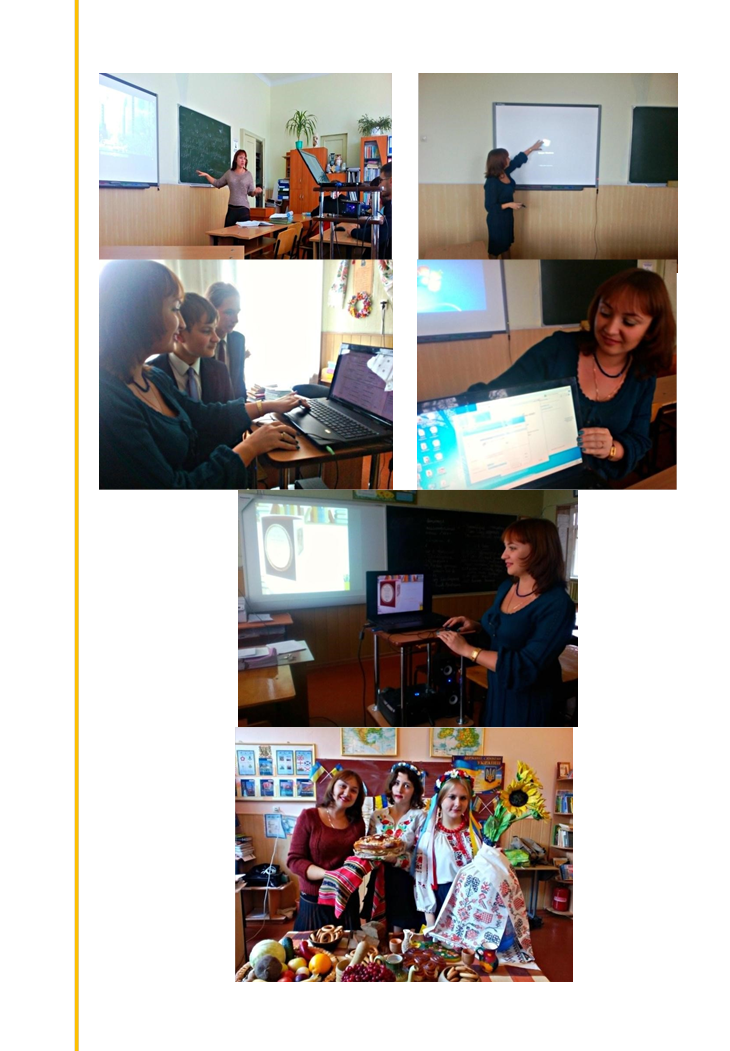
|
Додаток 12
INTEGRATED ENGLISH AND IT LESSON |
|
|
|
” English-speaking countries through the program " Windows cinema"" |
|
10 form
Developed and conducted by: teacher of English qualification category I Kurilenko Olga Anatolyevna, teacher of Information technology qualification category higher Bykov Andrey Aleksandrovich 2015 |
|
INTEGRATED ENGLISH AND IT LESSON
THEME: English- speaking countries through the program " Windows cinema" AIM: Using IT to develop communicative competence.
English Objectives:
• to revise and fix the vocabulary on the topic;
• to revise "The use of articles with geographical names";
• to develop speaking (dialogue, monologue);
• to develop academic skills such as note taking;
• to develop interest in other countries;
• to develop the ability to work in cooperation in groups;
• to motivate students for further learning English language.
IT Objectives:
• To acquaint students with the program " Windows cinema"; To develop the ability to think analytically ;
• To develop creative abilities.
The type of the lesson: integrated lesson
Teaching resources and equipment: computers, Smart Board, Internet, Power Point, http://master-test.com, programe “Windows cinema”. Home preparation of the "Network project":
It was to create pupils` own personal video clip on the theme "English speaking countries". They used information retrieval, conversation with a native speaker online through the Skype.
![]()
![]() Also they used electronic dictionaries, textbooks, and sites with cross-cultural information .Also it was suggested to use the website http://www interpals.com ,where children could take the information from their English-speaking pen pals, chat in various chat rooms with peers from English-speaking countries. Using a technology "Cloud", they could exchange ideas, suggestions and consulted with teachers.
Also they used electronic dictionaries, textbooks, and sites with cross-cultural information .Also it was suggested to use the website http://www interpals.com ,where children could take the information from their English-speaking pen pals, chat in various chat rooms with peers from English-speaking countries. Using a technology "Cloud", they could exchange ideas, suggestions and consulted with teachers.
Procedure:
1. Introduction 5) Greeting
Teacher: Good morning, pupils! I am very glad to see you!
Ps: We are glad to see you too!
2)Aim
We have a very unusual lesson today because we should use English knowledge in Computer Science.
English teacher :I with teacher of IT will teach you how to make your own video products. Today I am going to sum up all the material about Great Britain, the USA, Australia,New Zealand and Canada. We will remember the words connected with this topic and revise grammar "The use of articles with geographical names". Also we will appreciate your work with marks and certificates in both subjects English and IT.
Computer science teacher refreshes the students ' knowledge and prepares them for motivation and goal setting:
-informs the topic of the lesson;
- formulates the aim of involving students;
- reveals the practical importance of the material, motivating students to be active in the activities during the lesson.
3)Warming-up
Look at the slide. Here you can see some proverbs :
So many countries, so many customs.
So many men, so many minds.
Tell me please, what is the main idea of them? Can you explain?
The first thing that comes to our mind when we are speaking about any county is its geography. Now give your associations to this word. A cluster is on the
SMART BOARD:
←geography→
↓↓↓↓
(Location, boundary, area, water resources, cities, towns, etc.) 2.The Main part.
SMART BOARD
1)Refreshing and fixing .
Vocabulary Practice. English teacher :
-I’LL give you the shapes of different English –speaking countries on the Smart Board. Guess what countries have such shapes. You’ll have 1 minute to guess. -Now a little Quiz. Fill in the gaps on the SMART BOARD
What country: 1…is the smallest continent and the biggest island?
2…consists of 4countries: England, Scotland, Wales and Northern Ireland?
![]()
![]() 3…is the second largest country in the world? 4…is called Land Down Under? 5…has unique flora and fauna?
3…is the second largest country in the world? 4…is called Land Down Under? 5…has unique flora and fauna?
SMART BOARD
-Match the countries and the word combinations corresponding to them.
(The teacher demonstrates on the multimedia Board, the names of countries and phrases that students should choose and combine). Great Britain ( an island state),
Australia (a “Lucky country”),
New Zealand ( an upside down country),
the USA ( a real melting pot),
Canada (the second largest country in the world).
2)Speaking
The development of pupils` dialogical speech. Group work.
The teacher conducts a review lexical units on the topic using questions.
The teacher asks them to unite and to work in groups of 5 countries. T.: Ask each other questions and answer them .
For example:
1) Where is your country?
2) what areas does it border?
3) What are the territory and population of the country?
4) Which city is the capital?
5) What landscapes can be found in the territory of your country?
6) What are the major rivers?
7)What climate does dominate?
Presentation slide
T.: We continue to talk to you about the English-speaking countries. And so our language is competent, we will repeat the material. Look at Clichés as to describe the country( choral and individual repetition) Presentation slide
Look at the collage of English-speaking countries. Use Clichés and be ready to speak about it. You have only 2 minutes!
3)Grammar Practice .http://master-test.com
Students are tested on the topic "The use of articles with geographical names" 4)The stage of preparation for the practical assignment.
Science teacher: What is this program? (software to record, edit, and arrange audio and video to create movies). How can we open or close ? ( View task ) Where do we start to edit the film? ( task – import – images, video or audio ).
Computer Science teacher is demonstrating the creation of the film on the interactive whiteboard.
Pupils are doing their note taking.
5)While -practical assignment.
Students are creating their own movies at the computers
English language teacher in turns is coming up to a group that is willing to do the sounding of their film. -Reading
![]()
![]() The students again are reading the text about English- speaking country, if there are mistakes, the teacher corrects. The students in groups are presenting the sounding of the film and nearly made films to English and IT teachers.
The students again are reading the text about English- speaking country, if there are mistakes, the teacher corrects. The students in groups are presenting the sounding of the film and nearly made films to English and IT teachers.
6)Relaxation
T.: Now let's have a rest. Close your eyes and listen to the great English composer Vaughan Williams.
Concluding Part.
1)Summing up
English teacher :Let's summarize our work. What's new have you learned today?
What task was the most difficult for you?
Pupils are referring to the main activities of the lesson and evaluating their work.
Computer science teacher:
What was useful for you?
What new programme have you learned today?
Where can you use this knowledge?
2) Home task : “My movie project”
English Teacher: At the next lesson you will need to provide us, in class, ready for watching movies about the country you have chosen. Be ready to answer our questions about your country. At home, prepare questions for each other. Also at the next lesson we will learn how to write a" Film review". You will receive a certificate for your work. IT Teacher : Practise at home with this programe more.
3)Evaluating.
Saying goodbye.
T: Stand up, children! Thank you for your work. The lesson is over. Goodbye!
Literature
1.Давыдова Е.В. Как устроен Интернет? // Информатика и образование, 2004. №6.
2. Бабанский Ю.К. Оптимизация процесса обучения (общедидактические аспекты). М.: Педагогика, 1977.
3. Боярчук В.Ф. Межпредметные связи в процессе обучения. Вологда, 1988.
4. Зверев И.Д. Взаимосвязь учебных предметов. М.: Знание, 1977.
5. Максимова В.Н., Зверев И.Д. Межпредметные связи в учебно-воспитательном процессе в современной школе. М.: Просвещение,1987.
6. Огонькова Т. Сюжетное построение учебного дня. Учитель.2003,№2
7. Осин А. Главное – мотивация и самоорганизация учения. Учитель.-2003. №2.
8. Федорец Г.Ф. Проблемы интеграции в теории и практике обучения. Л. 1990.
![]()
![]() Internet sources
Internet sources
4. http://www.learnenglishkids.britishcouncil.org
5. http://www.slideshare.net/muhammedakelt/a-sample-integrated-lesson-plan-forenglish-language-teaching
6. http://www.eslprintables.com/teaching_resources/lesson_plans
7. http://festival.1september.ru
8. http://pedagogika.snauka.ru/en/tags/information-technology-integrated-lesson
![]()
|
Plan outdoor activities (8-11 class) Prepared and conducted by English teacher Kurilenko O. A. |
|
|
![]()
![]()
![]()
![]()
![]()
![]()
![]()
![]()
![]()
![]()
![]()
![]()
![]()
![]()
![]()
![]()
![]()
![]() Додаток 14
Додаток 14
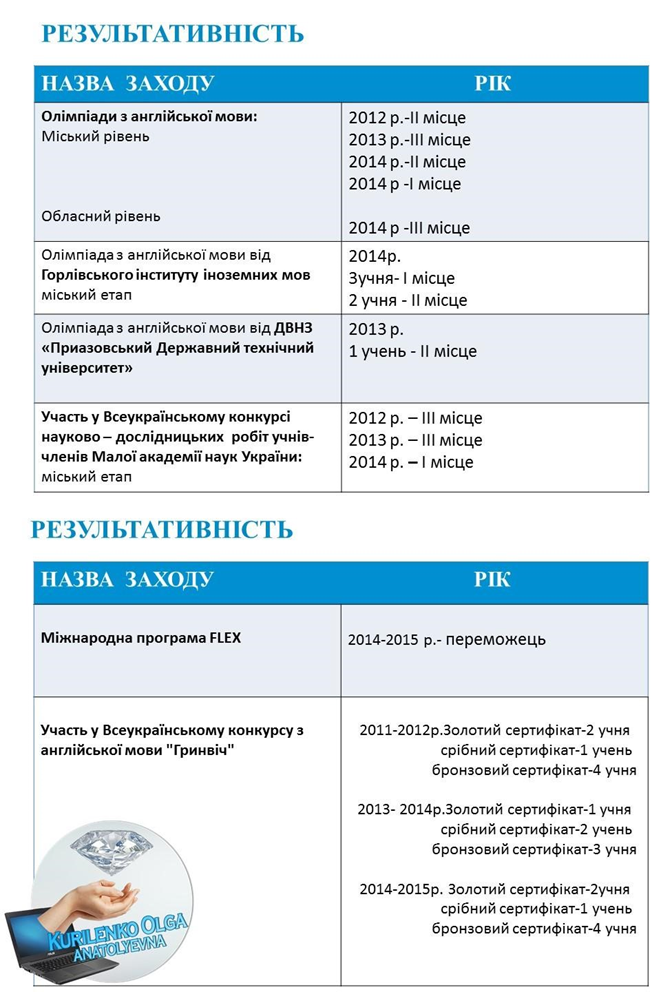
![]()
![]() Додаток 15
Додаток 15
![]()
![]() Додаток 17
Додаток 17
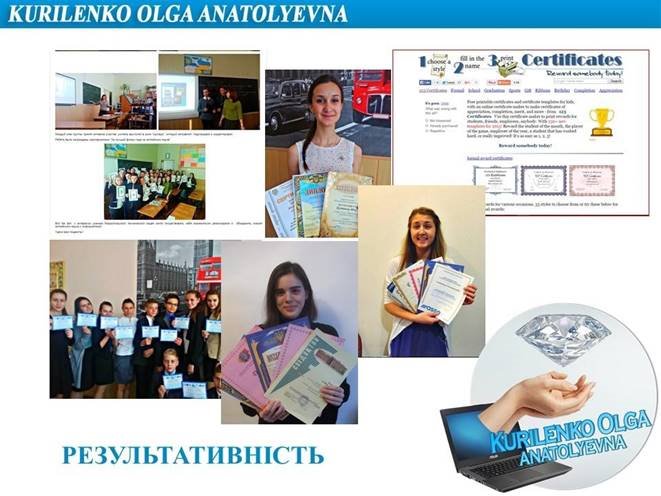


про публікацію авторської розробки
Додати розробку
